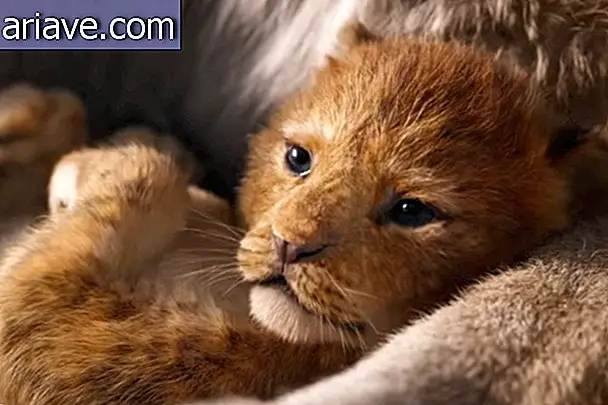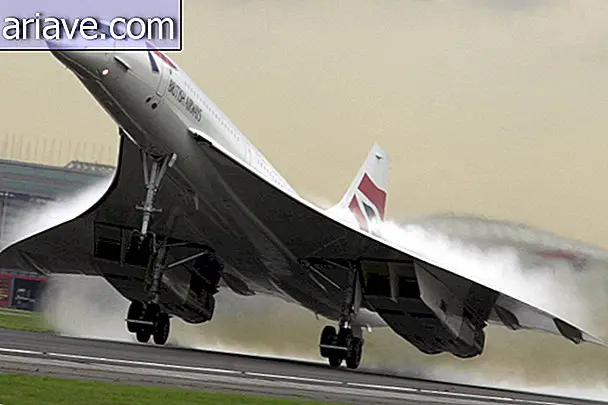Know some facts and curiosities about giraffes
In both safaris and zoos one of the most beloved and admired visitors is giraffes. These animals are enchanted mainly by their size, but their beauty is also a strong point.
They are the tallest mammals in the world, thanks to their tall legs and long necks. These fascinating animals usually circulate in the open fields in small groups of about six to twelve members across Africa's semi-arid plains. Check out some more facts and curiosities about giraffes:
Immense proportions

While watching a giraffe, have you ever wondered how tall it would be, how much it would measure its necks and legs? According to an article by Alina Bradford in Live Science, only the giraffe's neck alone can measure about 1.80 meters in length and have a weight average of 272 pounds. The legs are about the same size as the neck.
However, there is a total size difference between males and females. While they can grow to a height of 4.30 meters, males reach about 5.50 meters. With this size, obviously the organs of these animals are also of great proportions.
To give you an idea, according to the San Diego Zoo, the heart of a giraffe is 60 inches long and weighs an average of 11 pounds. When it comes to the respiratory system, for comparison, your lungs can hold 55 liters of air, while the lung capacity of a human being is six liters.
All giraffes still have one feature in common: the two hair-covered horns called ossicones, which the males use as fighting weapons, and also use their long necks to do so. However, both the neck and the horns are used in play as well as in dating.
Habitat

Giraffes live in Africa's semi-arid savannas and open forests that have trees and many tall shrubs available to feed as they are herbivorous animals. They live in groups and usually have a leader who is the oldest male. The other members of the group are females and their young.
When it comes to your sleeping habits, well, in fact they hardly exist, as giraffes only sleep about twenty minutes or less a day. This is because staying awake most of the time allows the animal to be constantly on the alert for possible predators to attack. These twenty minutes are practically divided into light naps.
reproduction
After mating, the giraffe has a gestation period of about 14 months and the puppy faces a problem at birth. All because, when the giraffe gives birth, the cub falls to the ground, because the mother has the birth standing.
As a result, the puppy falls about five feet to the ground. Poor little thing! But it usually ends well, and a while later they can get up and walk.
Baby giraffes are also born big, measuring about six feet tall and weighing 150 to 150 pounds. From three to six years old, puppies are already fully adults and they can live up to 20 years.
Species and subspecies

According to the Giraffe Conservation Foundation, it is generally accepted that there is one species of giraffe, which has nine subspecies:
Species: Giraffa camelopardalis *
* The name camelopardalis came from camel leopard, as ancient peoples believed that the giraffe originated from the mixture of these two animals.
Subspecies:
- Giraffa camelopardalis camelopardalis (Nubian giraffe)
- Giraffa camelopardalis giraffa (South African Giraffe)
- Giraffa camelopardalis Reticulata ( Reticulated Giraffe)
- Giraffa camelopardalis rothschildi (Uganda giraffe or Rothschild giraffe)
- Giraffa camelopardalis thornicrofti (Rhodesia or Thornicroft giraffe)
- Giraffa camelopardalis tippelskirchi (Masai or Kilimanjaro giraffe)
- Giraffa camelopardalis angolensis (Angolan Giraffe)
- Giraffa camelopardalis antiquorum (Kordofan giraffe)
- Giraffa camelopardalis peralta (Chad or Nigerian giraffe)
Other curiosities
- Like human fingerprints and zebra stripes, a giraffe's fur pattern is unique to each animal;
- Giraffes are silent animals and make no characteristic noise that the human ear can pick up. This is because giraffes communicate using noises that are too low for us to hear;
- Although they do not seem, these animals are very fast thanks to their long legs. They can run at a speed of up to 56 km / h in short shots.











